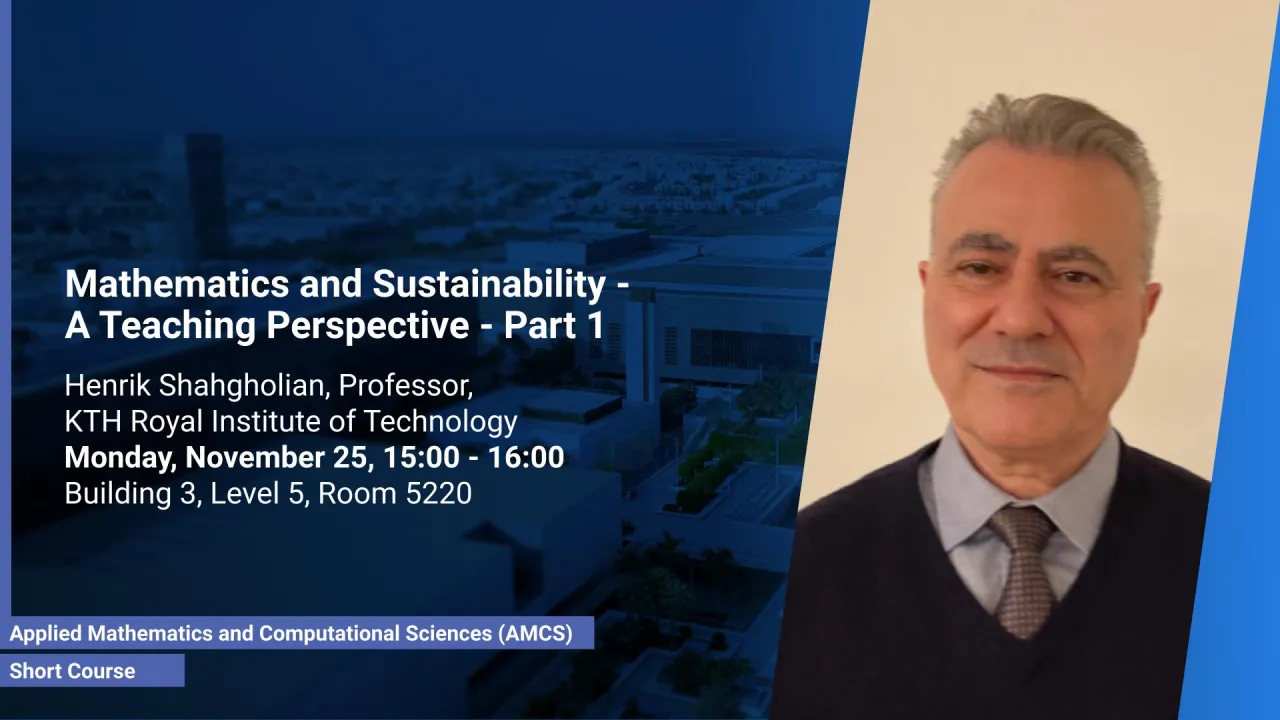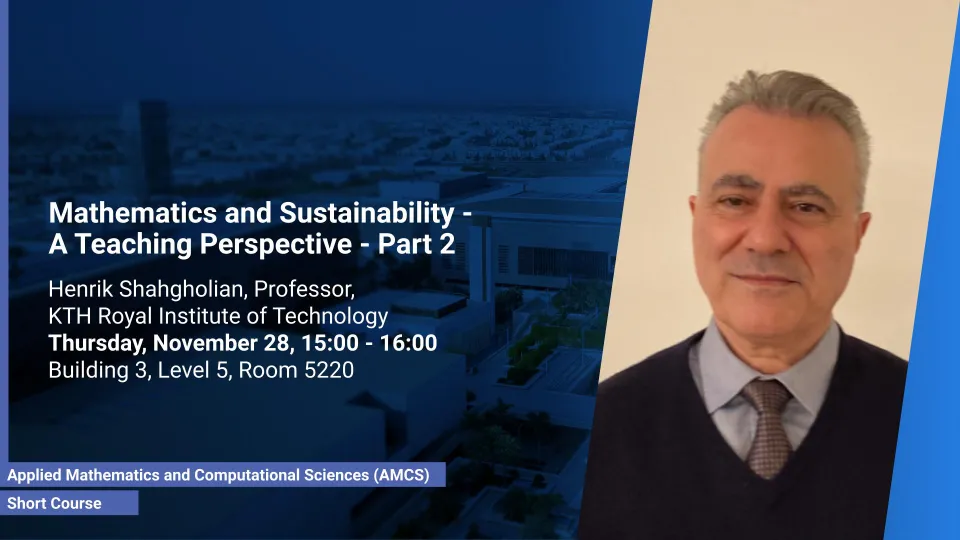
Mathematics and Sustainability - A Teaching Perspective - Part 1
B3, L5, R 5220
In this two-part short course, I will present to the participants my recent activities related to teaching mathematics students about sustainability, including introducing and raising awareness of the sustainability topic.
Overview
The word "sustainability" — referring to the ability to maintain or support a process continuously over time—has become central to all aspects of society over the past two decades. As a research discipline, sustainability has gained significant momentum in recent years and remains one of the most prominent topics, still seeking a solid theoretical foundation.
This crash course explores the role of mathematics in sustainability through simple examples and potential applications. It is designed for a broad audience, with particular emphasis on master's-level students.
Historically, the role of mathematics in sustainability has not been taken seriously, largely due to several factors—one key issue being the lack of robust models that are both practically useful and mathematically sound. This course will therefore focus on existing models for complex systems related to sustainability.
I will address several widely recognized problems that are notoriously difficult to model due to their complexity. These include challenges within complex systems and sustainability, where applications in infrastructure, business, society, and other institutional activities are of growing importance. More specifically, I shall discuss Climate modelling, Ecosystem, Pollutions, Energy transitions, Tipping points.
Presenters
Henrik Shahgholian
Brief Biography
Henrik Shahgholian, Ph.D. (1991) from KTH Royal Institute of Technology, has been with KTH since 1991 and became a Full Professor in 2001. His research focuses on Partial Differential Equations (PDEs) and free boundary problems, with a particular emphasis on regularity theory, and his current interests include constraint maps and their free boundaries. He has authored over 140 publications, including one book and two book chapters.
